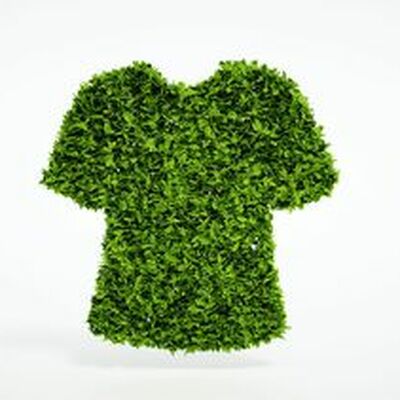Introduction
In the ever-evolving quest for sustainability, the fashion industry is continuously seeking innovative solutions to reduce its environmental footprint. One such solution has emerged in the form of recycled cotton, a game-changing textile that breathes new life into discarded cotton materials. By repurposing cotton waste, this eco-friendly fabric offers a compelling alternative to conventional cotton production, closing the loop on textile waste and promoting a circular economy.
What is Recycled Cotton?
Recycled cotton, also known as regenerated cotton, is a sustainable textile created by breaking down and reprocessing pre-consumer and post-consumer cotton waste. This waste can come from various sources, including cutting room floor scraps, defective garments, and even discarded clothing items. Through a specialized process, the cotton waste is transformed into new, high-quality fibers that can be spun into yarn and woven or knitted into fabrics.
The Production Process
The journey of recycled cotton begins with the collection and sorting of cotton waste. This waste is then subjected to a mechanical or chemical recycling process, depending on the desired quality and end-use of the recycled fibers.
Mechanical Recycling: In mechanical recycling, the cotton waste is shredded into small pieces, which are then cleaned, carded, and respun into new yarn. This process is relatively simple and energy-efficient, making it suitable for producing recycled cotton fibers for applications such as insulation, upholstery, and non-woven fabrics.
Chemical Recycling: Chemical recycling, also known as regeneration, involves breaking down the cotton waste into its molecular components using chemical solvents. The resulting solution is then extruded into new, high-quality regenerated cellulosic fibers. These fibers can be spun into yarn and woven or knitted into fabrics suitable for apparel and other textile applications.
Environmental Benefits of Recycled Cotton:
- Reduced Water Consumption: Conventional cotton cultivation is notoriously water-intensive, with a single cotton t-shirt requiring up to 2,700 liters of water to produce. By repurposing existing cotton materials, recycled cotton significantly reduces the water footprint associated with textile production.
- Lower Energy Usage: The production of recycled cotton requires less energy compared to virgin cotton, as it eliminates the need for resource-intensive processes like cultivation, ginning, and spinning.
- Waste Reduction: By diverting textile waste from landfills and incinerators, recycled cotton contributes to a circular economy, minimizing the environmental impact of the fashion industry's waste stream.
- Reduced Chemical Usage: The recycling process for cotton waste often involves fewer harsh chemicals compared to conventional cotton production, resulting in a lower environmental burden.
Applications of Recycled Cotton:
- Apparel: Recycled cotton has found widespread use in the apparel industry, with brands incorporating recycled cotton fibers into clothing items such as t-shirts, denim, and activewear. This not only reduces the environmental impact but also appeals to eco-conscious consumers seeking sustainable fashion choices.
- Home Textiles: From bedding and towels to curtains and upholstery, recycled cotton is making its way into home textile products, offering a soft, durable, and environmentally friendly alternative to conventional cotton fabrics.
- Industrial Applications: The versatility of recycled cotton extends beyond apparel and home textiles, with applications in industries such as automotive, construction, and packaging, where recycled cotton fibers are used for insulation, padding, and non-woven products.
The Fashion Industry's Embrace of Recycled Cotton: As consumer demand for sustainable and ethical fashion continues to grow, the fashion industry has taken notice of the potential of recycled cotton. Major brands and retailers have been incorporating recycled cotton into their product lines, recognizing the environmental benefits and the opportunity to appeal to eco-conscious consumers.
By embracing recycled cotton, fashion companies can communicate their commitment to sustainability, reduce their carbon footprint, and contribute to a circular economy. Furthermore, the use of recycled cotton aligns with emerging global initiatives and regulations aimed at promoting sustainable practices in the textile industry.
Challenges and Opportunities
While recycled cotton offers numerous environmental and economic advantages, there are still challenges to overcome in its widespread adoption:
- Supply and Demand: The current supply of recycled cotton fibers is limited compared to the demand for sustainable textiles, highlighting the need for increased investment in recycling infrastructure and collection systems.
- Quality Consistency: Ensuring consistent quality and performance of recycled cotton fibers can be challenging, as the properties of the recycled material may vary depending on the source and processing methods used.
- Consumer Awareness: Despite its sustainability benefits, consumer awareness and understanding of recycled cotton remain relatively low, presenting an opportunity for education and marketing efforts to drive broader acceptance and demand.
- Scaling and Cost: While recycled cotton offers long-term cost savings, the initial investment in recycling facilities and technology can be substantial. Achieving economies of scale and improving process efficiencies will be crucial in making recycled cotton more affordable and accessible to a wider range of consumers and manufacturers.
Conclusion
Recycled cotton represents a significant step towards a more sustainable and circular fashion industry. By repurposing textile waste, this innovative fabric not only reduces the environmental impact of cotton production but also promotes a closed-loop system that maximizes resource efficiency.
As consumer awareness and demand for eco-friendly products continue to rise, the adoption of recycled cotton is poised to grow, driving innovation and investment in recycling technologies and infrastructure. By embracing recycled cotton, the fashion industry can contribute to a greener future, where textile waste is transformed into a valuable resource, and sustainable fashion becomes the norm rather than the exception.



